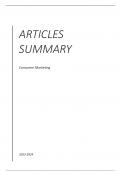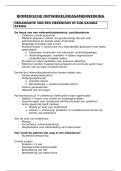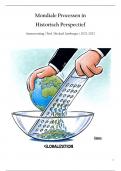Samenvatting
Articles Summary 2023 - Consumer Marketing, Msc Marketing VU
- Instelling
- Vrije Universiteit Amsterdam (VU)
This document contains a detailed summary of all the required articles for the course Consumer Marketing, in 2023. It includes both the articles discussed during the lecture and the ones discussed during the tutorials.
[Meer zien]









